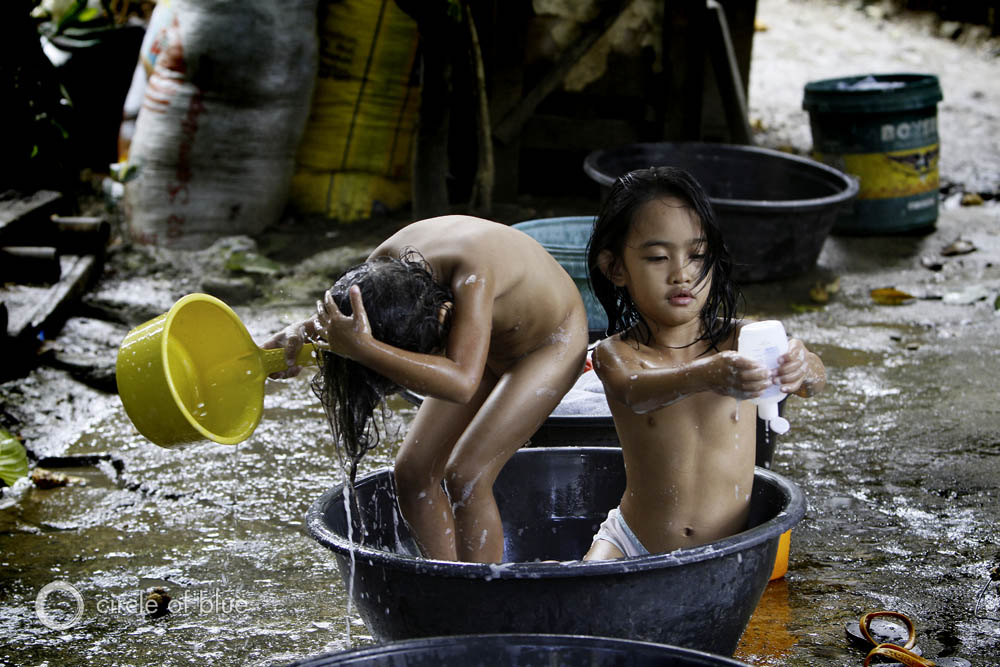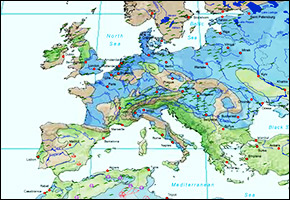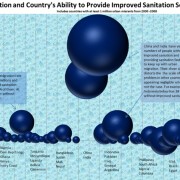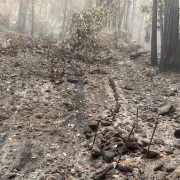U.S. Foreign Aid Agency’s New Water Strategy Targets Health and Food
The U.S. Agency for International Development last week unveiled a new strategy for water that sets criteria for project selection and numeric targets for people served.

By Brett Walton
Circle of Blue
For the first time, the U.S. Agency for International Development (USAID) has offered a strategy for implementing the Water for the Poor Act, a 2005 law that made water and sanitation explicit U.S. foreign policy goals.
The strategy, developed through public consultations, has two objectives: better health and sustainable agriculture systems that lead to food security. The emphasis on food production and nutrition reflects an international call for systematic thinking about natural resources, economic growth, and human development.
The strategy’s health component continues USAID’s longstanding emphasis on drinking water, sanitation and hygiene, collectively known as WASH, and it sets two targets for the next five years: providing at least 10 million people with sustainable access to an improved water supply and at least 6 million people with sustainable access to improved sanitation. USAID’s water program has never before had numerical targets for people served.
“Sustainable” is a key concept throughout the document. Following a trend set by nongovernmental water groups, USAID will dedicate more resources to ensuring its wells and tanks still work years after the ribbon was cut, said Chris Holmes, USAID global water coordinator.
“We’re supporting monitoring and evaluation in order to figure out what’s going on long term,” Holmes told Circle of Blue. “We plan to evaluate projects post-completion, and we hope to have monitoring funds for every project.”
–Chris Holmes,
USAID global water coordinator
The strategy also reveals in broad terms how USAID will choose the recipients of its WASH aid. Large investments will be made in countries that have the infrastructure, governance, and expertise to bring “transformational” change in water and sanitation service and policy. Smaller amounts of money will go to countries that can make significant progress in one of the three WASH branches. Funds will also be distributed to countries that are a political priority, notably those in the Middle East.
In an attempt to be more transparent about its activities, this is the first time USAID has set selection criteria to guide its investments, Holmes said.
In fiscal year 2011, the most recent year with complete data, USAID spent $US 558 million on its water program, roughly 2.6 percent of total U.S. foreign aid. Some 35 percent of the water program money was spent in Africa, which will remain a focus.
David Winder, CEO of WaterAid America, a WASH nonprofit, told Circle of Blue he would like to see USAID’s selection criteria place more emphasis on the poorest sectors of society and those countries where the mortality rate is the highest.
Water for Food
The strategy’s agriculture component dovetails with the Obama administration’s foreign-policy initiative on food security, called Feed the Future. Including agriculture in the water strategy is evidence that policymakers are thinking beyond narrow administrative niches.
“Dealing with water and food is an important shift,” Holmes said. “We’re starting to look at critical linkages between WASH and nutrition.”
USAID wants to improve the productivity and efficiency of both rainfed and irrigated agriculture. This means getting more water to the fields and producing more crops from that water.
Rainfed production dominates global agriculture, accounting for four out of every five acres of farmland and more than 60 percent of the world’s food. These areas show the most promise for increasing yields, and thus increasing food production. Taking the least productive rainfed fields in Africa from awful to merely bad (the 20th percentile of productivity) could increase the continent’s food supply by 10 percent – and without clearing new land, according to a study published online this week in Environmental Research Letters.
There are many paths to this goal, most of which will depend on local circumstances. The strategy calls for patching shoddy canals, building small-scale water storage, and connecting farmers to data about weather forecasts and market prices. Better land management practices to conserve soil moisture also factor in.
The Process
Unlike many government agencies involved in foreign affairs, which tend to develop policies as if in a black box, USAID opens its doors. In this case, the agency invited development experts and water charities to help refine the strategy.
–George Ingram,
Brookings Institution
“The way they developed this sets a model for how government should set policy in an open, publicly involved manner,” George Ingram told Circle of Blue.
Ingram, now at the Brookings Institution, worked at USAID during the second Clinton administration. He did not take part in the water consultations, but he did see the process first-hand at the agency while working with small businesses in the former Soviet Union.
Those who did participate in the consultations praised USAID’s methods.
“We were pleased to see that USAID reached out to nonprofits,” said WaterAid’s Winder, who appreciated the strategy’s emphasis on nutrition, sanitation, and hand washing.
The latter two, Winder said, might have gained prominence because sanitation has lagged drinking water access as measured by the United Nations’ Millennium Development Goals for human development.
Brett writes about agriculture, energy, infrastructure, and the politics and economics of water in the United States. He also writes the Federal Water Tap, Circle of Blue’s weekly digest of U.S. government water news. He is the winner of two Society of Environmental Journalists reporting awards, one of the top honors in American environmental journalism: first place for explanatory reporting for a series on septic system pollution in the United States(2016) and third place for beat reporting in a small market (2014). He received the Sierra Club’s Distinguished Service Award in 2018. Brett lives in Seattle, where he hikes the mountains and bakes pies. Contact Brett Walton










Leave a Reply
Want to join the discussion?Feel free to contribute!